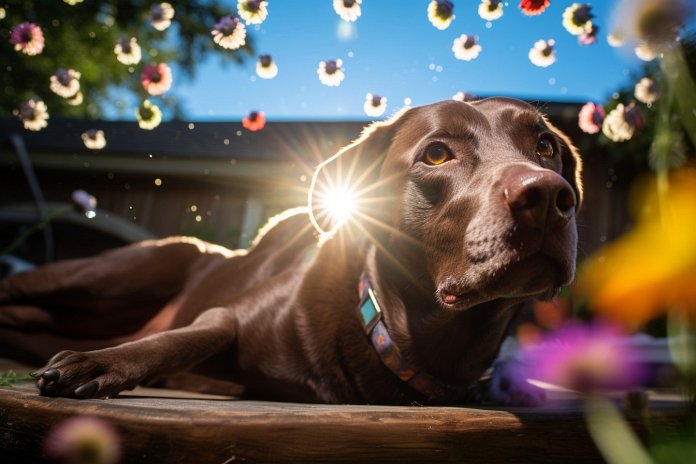
Imagine you’re sitting on the couch with your dog, enjoying a relaxing Saturday afternoon. Suddenly, your dog starts acting strangely – tilting their head, barking at nothing outside the window. Could your dog be hallucinating? Surprisingly, the answer is yes. Dogs can experience hallucinations, just like humans. Hallucination occurs when you perceive something that isn’t really there. Dogs may show different symptoms than humans, such as refusing to come inside, obsessively barking or growling, staring into space, or fly-biting (nipping at imaginary flies).
Body Language
If you suspect your dog is hallucinating, there are several signs to look for, including growling, staring, barking, panting, twitching whiskers, stalking, ears back, dilated pupils, and “whale eye” (when you can see the whites of their eyes). Other signs may include fly-biting, refusal to come inside, barking or responding to nothing, seizures and epilepsy, and obsessive behaviors that don’t make sense.
Historic Causes of Hallucinations in Dogs
Determining the causes of dog hallucinations can be challenging since dogs can’t communicate their experiences verbally. Hallucinations are often associated with epilepsy or seizures, acting as warning signs of these conditions. Focal seizures and liver problems are common causes. Additionally, hallucinations can result from ingesting toxic foods, such as chocolate, which can affect dogs within 24 hours.
The Science Behind Hallucination
Understanding what hallucination is and the types dogs can experience can help in addressing and treating these episodes. Auditory hallucinations can affect a dog’s hearing, making them think they hear something that isn’t real. Visual hallucinations are also common, causing behaviors like flycatching or star gazing, where dogs bite or chase imaginary objects.
Training Your Dog to Deal With Hallucinations
Training a dog to cope with hallucinations can be challenging. Medication, such as Valium, may be prescribed to reduce anxiety. For dogs with epilepsy or seizures, multiple medications may be necessary. Administering pills can be tricky, but options include hiding them in food, using special treats, or feeding the pill directly from your hand. For more resistant dogs, distracting them with a throw-and-catch game can be helpful.
“Dogs may not be able to tell us what they’re seeing, but their behavior speaks volumes – signs of hallucination in dogs are not to be ignored.”

Tips & Things to Know
1️⃣ Look for signs of hallucination in your dog’s behavior, such as obsessive barking or growling at nothing, staring off into space, or fly-biting.
2️⃣ Pay attention to your dog’s body language, as growling, staring, panting, twitching whiskers, and dilated pupils can indicate that something is off.
3️⃣ If your dog is experiencing hallucinations, consult a veterinarian to determine the cause and explore treatment options, which may include medication to reduce anxiety or manage epileptic issues.
Frequently Asked Questions, Answered ✅
1. Can dogs hallucinate?
– Yes, dogs can hallucinate just like humans can.
2. How can I tell if my dog is hallucinating?
– Signs of dog hallucinations can include refusing to come inside, obsessively barking or growling at nothing, staring off into space with intense focus, and fly-biting.
3. What are some body language signs that my dog might be hallucinating?
– Some body language signs that your dog might be hallucinating include growling, staring, barking, panting, twitching whiskers, stalking, ears back, dilated pupils, and whale eye.
4. What are some other signs that my dog might be hallucinating?
– Other signs of dog hallucinations can include seizures and epilepsy, obsessive behaviors that don’t make sense, and refusal to come inside or stubbornness.
5. What are the historic causes of hallucinations in dogs?
– Historically, hallucinations in dogs have been associated with epilepsy or seizures, liver problems, and consumption of toxic foods like chocolate.